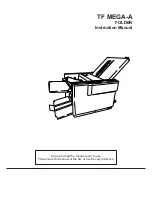
22
Connecting the Machine to Power Supply
Your machine is equipped with a detachable power
cord. Before connecting the power cord, make sure
the voltage and frequency shown on the machine
are identical to your electrical power.
Check that the power/light switch is in the off posi-
tion. Push the plug into the machine socket and plug
the machine into the wall socket.
Your machine may come equipped with a polarized
plug (one prong wider than the other). A polarized
plug reduces the risk of electrical shock. This plug is
intended to fit into a polarized outlet. If the plug does
not fit fully into the outlet, reverse the plug. If it still
does not fit, contact a qualified electrician to install
the proper outlet. Do not modify the plug in any way.
Switch on the machine.
For Your Safety
Do not use extension cords or plug adapters.
Do not touch plug with wet hands.
Always turn off the power/light switch first and then
unplug from the electrical outlet. Examples:
• when leaving the machine unattended
• when cleaning the machine
Always turn off the power/light switch:
• when attaching or removing parts such as
needle, presser foot, needle plate
• when threading needle or bobbin
Do not place anything on the foot control.
Do not place heavy items on cords. Do not subject
cords to heat. Do not use damaged cords. Have the
cord repaired immediately.
While the machine is in operation, always keep your
eye on the sewing area and do not touch any moving
parts such as the thread take-up lever, flywheel or
needle.
(U.S.A.)
















































